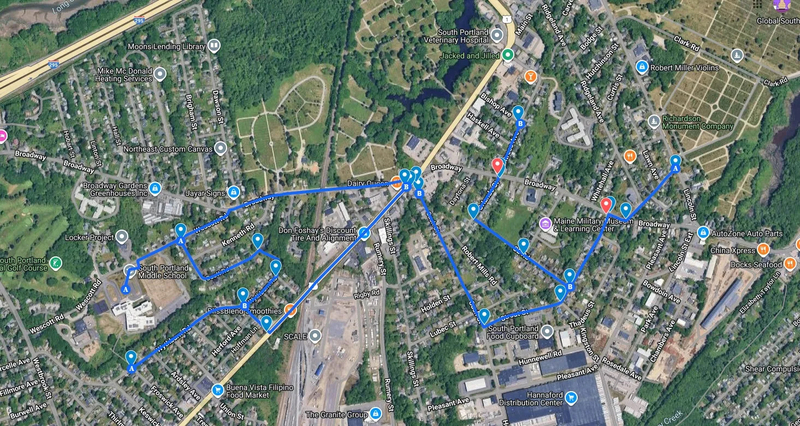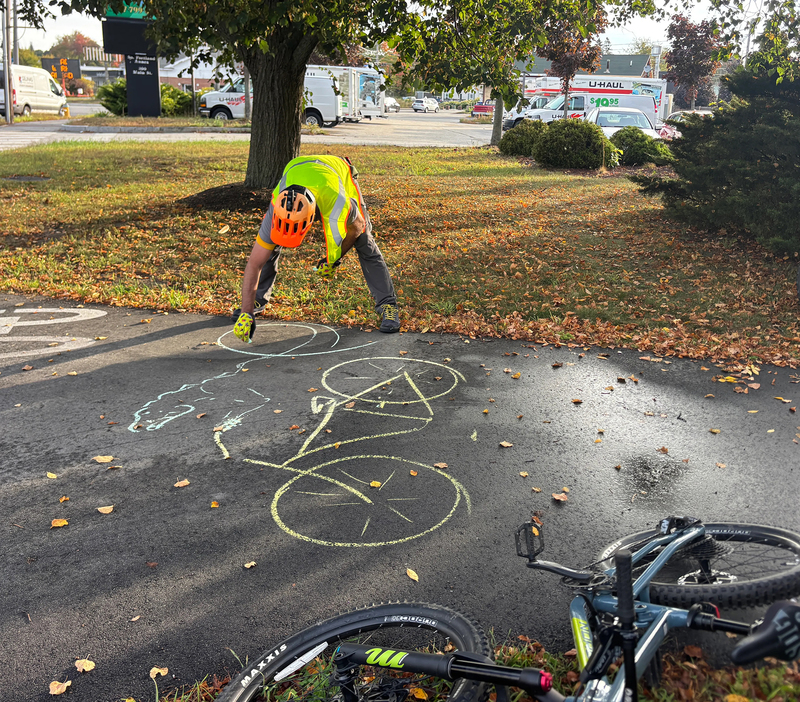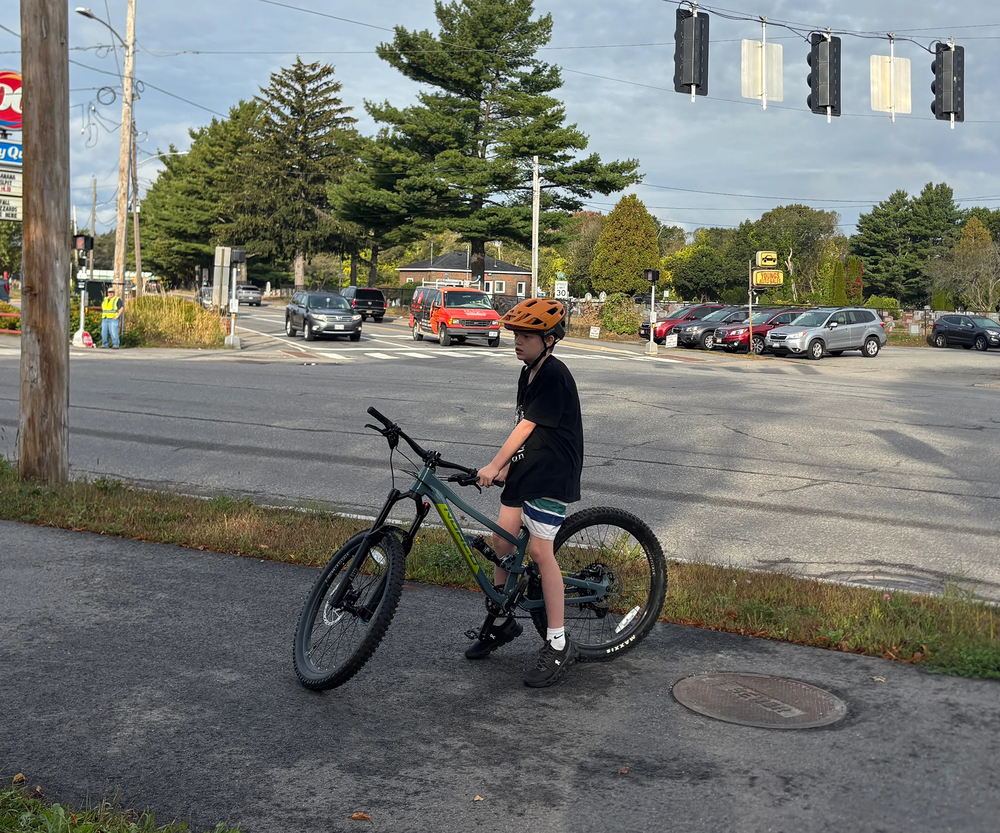Published September 25, 2025 by Dana Richie, Portland Press Herald.
The new route connects the Thornton Heights, Cash Corner and Ligonia neighborhoods and provides safe passage to the middle school.
SOUTH PORTLAND — A gander of geese roved along the grass of Forest City Cemetery as the sun rose higher in the sky. Across the street, two sixth graders mounted their bikes.
The duo, accompanied by four adults donning neon, pedaled up the hill of Church Street. Jack Hoyt, one of the 11-year-olds, showed off the improved suspension of his bike, bouncing on his seat.
“Keep the wheelies to a minimum,” said Cashel Stewart, the transportation planning manager with Greater Portland Council of Governments and a volunteer guide for this event.
The group disappeared over the hill.
A few minutes later, they arrived at a blue tent set up along the Cash Corner intersection. The boys flung their bikes to the ground and grabbed snacks and hot chocolate from the table.
Hoyt, who likes to mountain bike and ride bikes with his friends around the neighborhood, doesn’t normally bike to school. But when he saw a poster at school advertising the launch party for the new neighborhood byway, he decided to give it a try.
The Thornton-Cash Corner Byway, which navigates quieter local streets instead of bustling roads, provides a safer way for students to bike to South Portland Middle School, connecting the Thornton Heights, Cash Corner and Ligonia neighborhoods.
“It gives people an opportunity to get out of their cars and do active transportation, and that helps connect people not only to their neighborhoods, but to other people who are biking,” said city Sustainability Director Julie Rosenbach.
South Portland’s sustainability department hosted a launch party on Wednesday morning for fifth through eighth graders. The Bicycle Coalition of Maine led safety lessons at two starting points, the corner of Bishop and Huntress streets and Lincoln and Church streets, before guides led the children to Firefighter’s Park to celebrate with snacks, drinks and giveaways before the school day began. Rosenbach estimated that 10 students stopped by on their bikes on their way to school.
Hoyt and his buddy Ethan Pelczynski were some of the first riders of this route, a project that has been in the works since the middle school was consolidated two years ago.

The east side of the city has the Greenbelt and lots of safe ways for students to get to school, Rosenbach said.
“We wanted to make sure that people have a safe route to school on the west side of the city,” she said, avoiding major arteries like Broadway and deliberately choosing roads with lower traffic volumes.
Particularly, the city wanted a safe way for students to cross Cash Corner, one of the intersections with the highest number of car versus bike incidents, according to Rocco Navarro, an officer with the traffic unit of the South Portland Police Department.
“Anything to keep them off the busy intersections,” Navarro said.
While working for the sustainability department in 2023, Stewart said he received a lot of calls from residents near Cash Corner and Thornton Heights saying it was difficult to get to the new middle school. In the same year, the city received a $50,000 community action grant. A byway was a logical solution.
“Arteries are hard to retrofit,” Stewart said. “Neighborhood byways are low-cost options for active transportation.”
The city used the grant funding to add two ADA crossings on Broadway with flashing lights, adapt part of the sidewalk on Church Street, post signs to mark the route and spray-paint stencils on the road to help with wayfinding.
Communities across the state and country are starting to implement neighborhood byways, according to Stewart. Portland has one that zig-zags between Brighton Avenue and Forest Avenue, connecting riders to Deering Oaks Park.
“In an ideal world, there would be byways connecting all towns,” said Thomas Hargrave, education specialist with the Bicycle Coalition of Maine. He said that towns are constrained by busy roads, location and size of greenspace and how they’re using old railroads.
Many towns in the area are thinking about active transportation. Scarborough, for instance, is currently working on closing the gap of the Eastern Trail. Once the 1.6-mile section is complete, the trail will allow 16 miles of uninterrupted, off-road passage between downtown Saco and Bug Light Park in South Portland.
South Portland hopes to connect the Thornton-Cash Corner Byway to the Greenbelt and other multiuse trails in the future.

Until then, the sustainability department plans to raise more awareness for the existing route, reaching out to schools and continuing to partner with local organizations like the Bicycle Coalition of Maine and the Portland Gear Hub.
With the ring of a cowbell, the boys mounted their bikes once more. Hoyt and Pelczynski had a big day of learning ahead of them.
“Have fun,” Rosenbach called after them. “Ride safe.”
They biked past the Dairy Queen and started their day.

